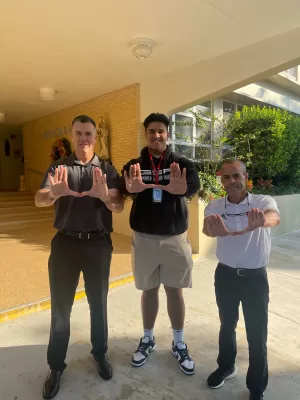St. Patrick’s Day Origins
Seniors Ruben and William are excited for St. Patrick’s Day celebrations to begin soon.
March 14, 2023
As St. Patrick’s day approaches, some may be curious, myself included–an actual person of Irish heritage!, as to why we celebrate the holiday on March 17th.
For starters St. Patrick’s Day is celebrated each year, which is the anniversary of his death in the fifth century. Saint Patrick is the patron saint of Ireland and its national apostle. He was born in Roman Britain and at the age of 16 was kidnapped and taken to Ireland as a slave. He later was able to escape, but ended up returning to Ireland to spread Christianity. He is most known for his explanation of the Holy Trinity: Father, Son and Holy Spirit, and how it is like a native Irish clover called a shamrock. In several years to follow, many believe that St. Patrick died March 17, 461. The Irish have celebrated and preserved this holiday for over 1,000 years, falling during the season of lent for Christians, so traditionally Irish families attend church in the morning and end the day with celebration.
The first parade for St. Patrick’s day did not take place in Ireland, but in America. Records show that in March 17, 1601, in a Spanish colony which is now St. Augustine, the parade was organized by the Spanish Colony’s Irish vicar Ricardo Artur. In the mid 19th century when the Great Potato Famine hit Ireland, many fled, pouring into America in order to escape starvation. In 1948, President Harry Truman attended a St. Patrick’s Day parade in New York City, making it a proud moment for many Irish Americans after decades of fighting stereotypes and racial prejudice and finally feeling accepted into the “New World.” Today, we celebrate St. Patrick’s Day not only in America but all over the world in different ways , such as throwing parades, dying rivers greens, cooking Irish recipes and most importantly, wearing green.















